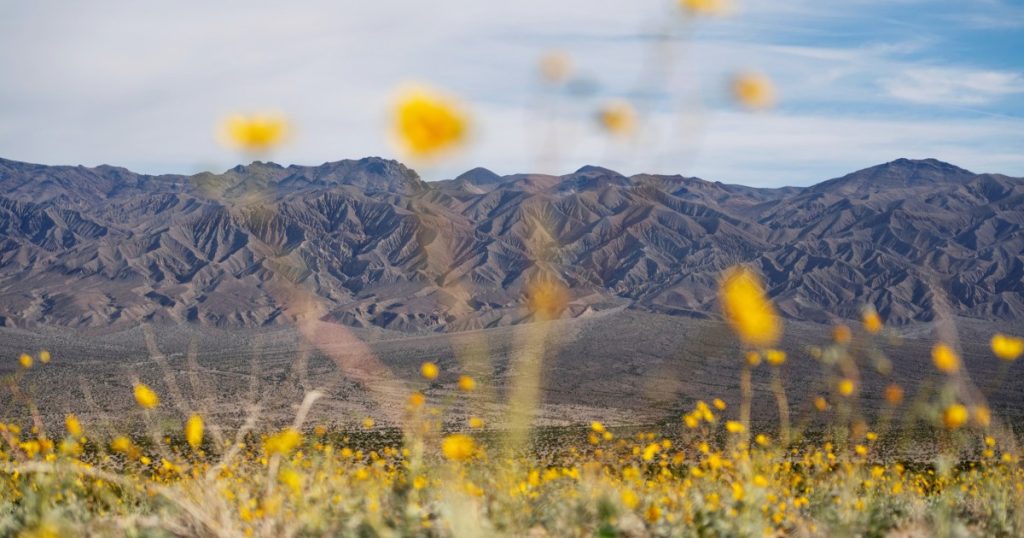Recent extreme weather events in Death Valley have highlighted the impact of climate change on the region, with a 1-in-1,000-year storm washing out park roads and setting new rainfall records. The area had been experiencing the driest period since the year 800, with desert plants like the creosote bush showing signs of distress. However, a deluge in August followed by a rare Pacific hurricane brought relief, rejuvenating the landscape with an abundance of wildflowers and refilling Lake Manly. These events have been described as “climate whiplash” by experts, showcasing the unpredictable nature of environmental changes in the region.
Local businesses, such as the ecotourism town of Shoshone, have been significantly impacted by the extreme weather events. Highway 127, which connects the area to Death Valley National Park, was closed due to flooding, disrupting access for tourists. The community, dependent on tourism revenue during the fall and winter months, pushed for expedited road reconstruction to minimize the economic impact of the closures. The re-opening of the park and highway in October and January, respectively, allowed for a partial recovery, but the long-term effects of climate-related disruptions remain a concern for local economies.
Death Valley serves as a unique and extreme environment, where plants, animals, and local economies must adapt to changing conditions to survive. The region’s resilience will be tested as climate change exacerbates existing challenges like droughts and intense rainfall. Scientists and residents alike are witnessing these changes in real time, offering valuable insights into the consequences of global warming. Plants like the creosote bush, known for their durability, are struggling to cope with prolonged droughts, while extreme rainfall events present both opportunities and challenges for the ecosystem.
The recent bout of extreme weather events in Death Valley has brought hope and challenges to the region. The resurgence of wildflowers and the revival of Lake Manly have provided a sense of rejuvenation and wonder, showcasing the resilience of nature in the face of adversity. However, the unpredictability of climate change poses ongoing risks to the area, requiring proactive adaptation strategies from residents and businesses. As the effects of global warming continue to unfold, the future of Death Valley remains uncertain, with the need for sustainable practices and resilience-building efforts becoming increasingly urgent.
Observing the impacts of climate change on Death Valley provides valuable lessons for understanding the complexities of environmental changes in extreme environments. The region’s unique ecosystem and economy are closely intertwined, with disruptions in one area affecting the other. As residents and scientists navigate the challenges posed by global warming, they are also uncovering opportunities for innovation and adaptation. By studying the responses of plants, animals, and local communities to climate-related events, researchers can gain insights into building resilience in the face of uncertainty.
In conclusion, Death Valley’s recent experiences with extreme weather highlight the urgent need for climate action and adaptation strategies in vulnerable regions. As global warming intensifies, communities like Shoshone and ecosystems like Death Valley National Park will face increasing challenges that require holistic and collaborative approaches. By staying vigilant, monitoring environmental changes, and implementing sustainable practices, residents and scientists can work towards securing a resilient future for this iconic symbol of endurance in the face of adversity.


